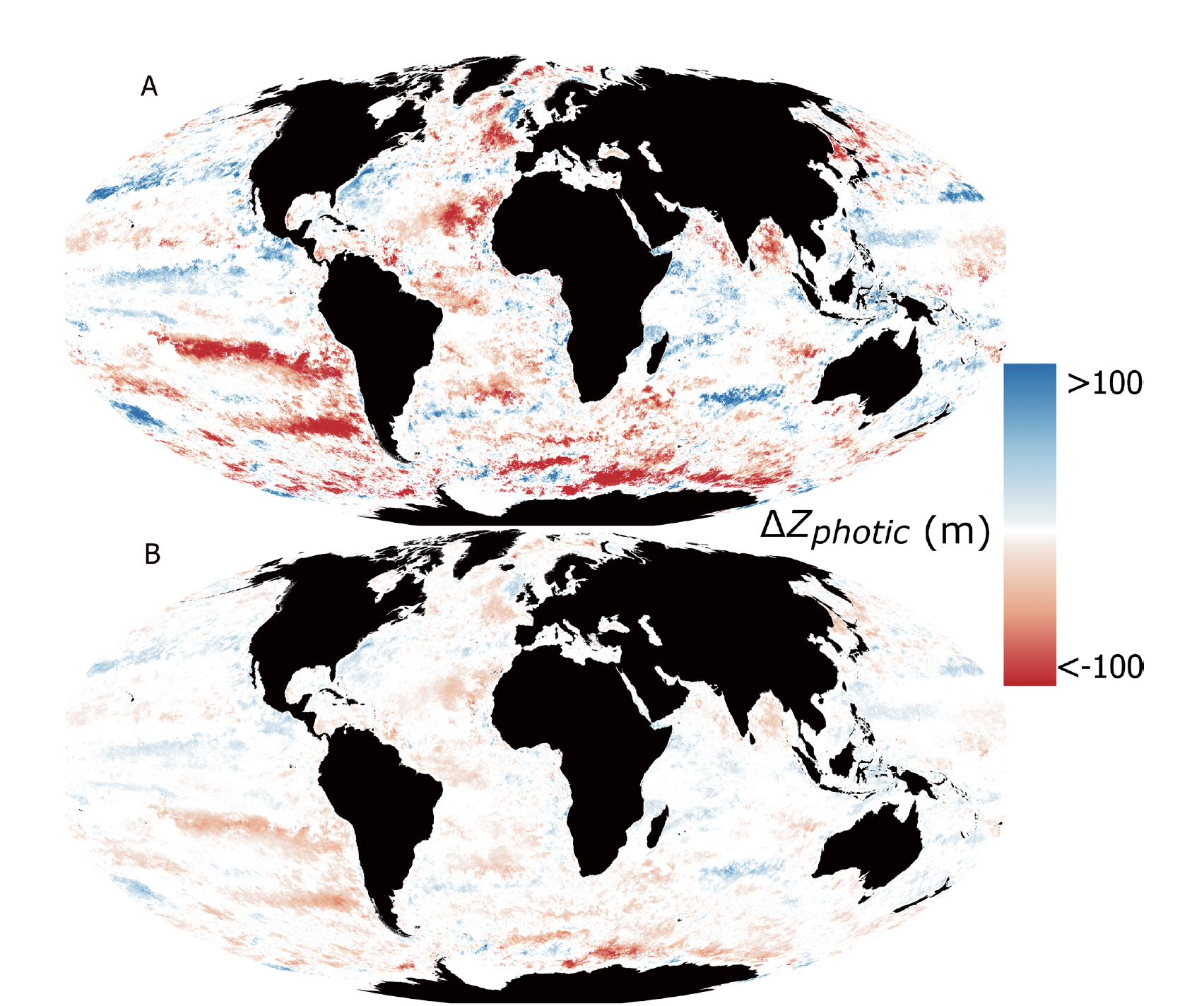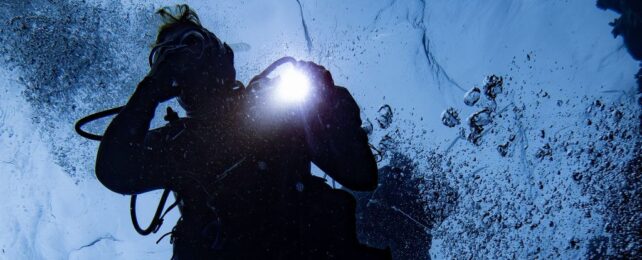Almost all life in the ocean depends on the upper waters where sunlight filters in, known as the photic zone – but new research suggests this narrow window of valuable marine light is shrinking in oceans worldwide. In the past 20 years, marine scientists have found, more than a fifth of our oceans have been growing darker.
Thomas Davies, a marine biologist from the University of Plymouth, and Tim Smyth, a marine biogeochemist from the University of Exeter, noticed that despite growing concerns from scientists about ocean darkening, nobody had really quantified its extent.
"There has been research showing how the surface of the ocean has changed color over the last 20 years, potentially as a result of changes in plankton communities," Davies says.
"Our results provide evidence that such changes cause widespread darkening that reduces the amount of ocean available for animals that rely on the Sun and the Moon for their survival and reproduction."
Pairing NASA satellite data from 2003 to 2022 with numerical modeling, the duo has uncovered a pattern of the photic zone depth – which inherently constrains the habitat for most ocean life – shrinking across the years.
The photic zone is the topmost layer of the ocean, where light from the Sun (including that reflected off the Moon) permeates the water. All marine organisms that photosynthesize – seagrasses, kelps, and most essential of all, phytoplanktons – must live in the shallower parts of this layer to harness the Sun's energy.
So the many other organisms that depend on these primary producers – like corals, crustaceans, fish, and marine mammals – hang out in the photic zone too.

The study found in nearly 10 percent of the world's oceans, the depth of the photic zone has shrunk by more than 50 meters (164 feet). This means that three-dimensional habitat has become a lot smaller, which leads to greater competition for resources. Even worse, in 2.6 percent of the ocean, the photic zone has reduced by more than 100 meters.
"The ocean is far more dynamic than it is often given credit for. For example, we know the light levels within the water column vary massively over any 24-hour period, and animals whose behavior is directly influenced by light are far more sensitive to its processes and change," says Smyth.
"If the photic zone is reducing by around 50 meters in large swathes of the ocean, animals that need light will be forced closer to the surface, where they will have to compete for food and the other resources they need. That could bring about fundamental changes in the entire marine ecosystem."

A few factors affect the depth of the photic zone. Light that hits the ocean in a vertical nosedive, like equatorial rays shining in the middle of the day, can penetrate further into the water, with fewer photons reflecting off the surface.
And the less resistance those plunging photons encounter, in the form of suspended sediment and organic matter, the further they can dive. That's why, in clear tropical waters, light can penetrate up to 80 meters deep.
When entering the water at an angle, however, more light reflects off the surface, and photons that do break the surface have to travel farther on their way down. This results in a much narrower photic zone at the poles – less than 10 meters deep in some places.
This may partially explain why some of the most prominent changes were seen in the photic zones of the Arctic and Antarctic. But sediment and other suspended matter, like algal blooms, make the water more opaque, affecting the depths that light can reach.
This is what Davies and Smyth suspect is darkening the world's waters in recent decades.
"A combination of nutrient, organic material, and sediment loading near the coasts and changes in global ocean circulation are probable causes of increases in primary and secondary productivity that have reduced light penetration into surface waters," they write in their research paper.
In extreme cases, like the recent algal blooms across Australia's Great Southern Reef, a lack of light can lead to mass mortality events.
But the world's photic zones aren't only shrinking near the coast, where we would expect excess runoff from human activities to cloud the waters, as is evident in the Baltic Sea and the eastern coasts of England and Scotland. Darkening was also prominent in the Gulf Stream and the poles, where climate change is rapidly changing the natural systems.
"We also rely on the ocean and its photic zones for the air we breathe, the fish we eat, our ability to fight climate change, and for the general health and wellbeing of the planet," Davies says.
"Taking all of that into account, our findings represent genuine cause for concern."
This research was published in Global Change Biology.
